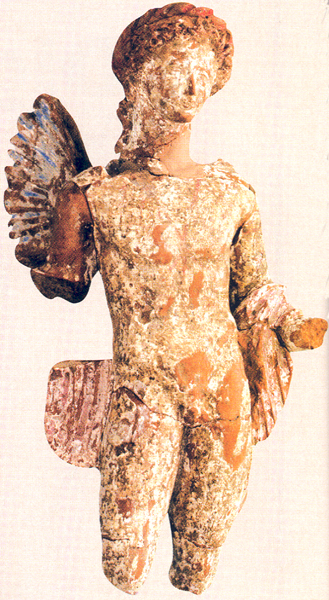Corinth Museum 275; Thieves 10
The story stretched out over ten years—a complicated tale of patient cops, elusive robbers, fish crates and narcotics dealers. Last winter 275 antiquities stolen from the Corinth Museum in Greece finally made their way back home.
The Greek police pinned the April 1990 heist of Attic and Boetian black-glaze vases, pyxis lids and sculptures (including the 8-inch-high, fourth-century B.C. statue of Eros below) on a clan of suspected thieves known as the Karahalios family. These alleged smugglers and narcotics dealers living near Patras, Greece, were kept under police surveillance for years, in the hopes that one of them would inadvertently lead authorities to the place where the stolen objects were stashed.

Greek police determined that the artifacts had been smuggled out of the country in fish crates bound for Florida. The crates were stored at the home of an associate in Miami, where the Karahalios family hoped to sell off the antiquities on the market.
When a stolen marble head from the Corinth Museum appeared in a Christie’s catalogue, the FBI and Interpol were brought into the case. It wasn’t long before the Karahalios gang was rounded up; one of the family’s sons was sentenced to life in prison and another was arrested for possession of narcotics. Two family members eluded the police and escaped to Venezuela, where they remain at the time of this writing.
Already a library member? Log in here.
Institution user? Log in with your IP address.

